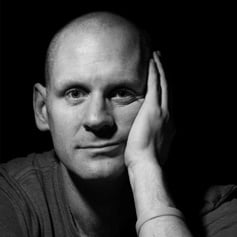
The benefits of sleeping during the day for a short while are pretty much undeniable in terms of science and wellbeing, and how it helps.
It doesn't suit some people, but it suits others, and so you'll come across people who are ‘nappers’ and people who absolutely rail against that (My wife Alison, for example, is very anti-napping and she sees it as a waste of life).
I learned about this years ago when I read about the sailor Ellen MacArthur, who sailed around the world and managed to sleep for no more than 2 times for 15 minutes a day for 3 months.
Much of the science developed early on at Loughborough University’s sleep centre has exploded outwards into the well-being world.
The basis of this, as far as I understand it, is that we, as hunter-gatherer animals, are designed to sleep for two cycles a day, in the middle of the night and the middle of the day. We still have the same hardware as when we were hunter-gatherers, so it still applies.
We often still get the dip in the middle of the day (at least many of us do, and that's our anthropology telling us that we're due to sleep in the middle of the day.
Research done by Loughborough in the early stages suggested that 15 minutes in the middle of the day will give you the equivalent benefit of an additional 3 hours at night (that's catastrophically enormous). Even if it were half that amount, it would be a huge benefit.
And years of practice, the way you can do this is as follows.
1) First of all, I don't do this every day, although I would if I could.
I would be more organised and better, but I do it whenever I can, and in fact, as I write this blog, I've just completed it.
2) Find a quiet place where you can do this at work or at home. For me there is a couch in my office, and I can fog the glass. It forms part of my lunch break, if I ever get one (in fact, it's the only part of a lunch break that I have).
3) Don't be embarrassed about sleeping during the middle of the day; it's clever.
4) Find your place, wherever that is, in your car, on your couch at work, in a corner in a hole, it doesn't matter, and then settle down. Make sure you're comfortable and set an alarm on your phone for 15 minutes (more than 15 minutes gives you a sleep hangover).
For me, what happens next is that I put my head down and count down from 60. Sometimes I'll listen to that playlist called CC Yoga, which is music that lends itself to me going to sleep.
Today, for example, I never got to 55. What happens is I start to lose count, and then I'm gone. I wake up, generally 7 or 8 or 9 minutes later, check the clock, and fall back to sleep. I've been doing this for so many years that I almost never get to the alarm. I get up, shake my head, and I feel a million times better.
When I'm in my best place, I do this every single day, and it makes me better day after day.
If you want to turbocharge this the way Dan Pink talks about it, you can turn it into what's called a ‘Nappuccino’. Have an espresso shot (or two) just about before you go down, pop your head down, and by the time you get back up, the benefits of the caffeine (and again, this is not a bad thing; they’re scientifically graded) give you a boost for the afternoon.
If you think this isn't significant, it's probably best to understand that science has shown both in the United States and in Britain that the maximum amount of non-accidental injuries in healthcare happened between 2 and 4 p.m. Why do you think that might be?
Hail to the nappers.
Blog Post Number - 4258





Leave a comment